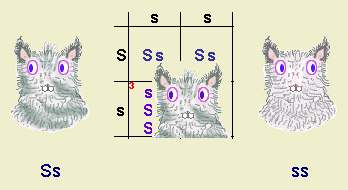

In a previous post I responded to a request from Rupa Rajagopalan. She asked me to outline how I built a digital resource, and left a comment on that post requesting more on the same theme. In this post I feature a few other resources, with some detail on their usefulness.
Spice in variety:
I’m not advocating the exclusive use of digital resources for any purpose. My own feeling about digital resources is that one’s enough at a time. You may already have met my Death by Chocolate principle:
A poor chef may include chocolate as an ingredient in every dish, but it is a shortsighted one who excludes its use altogether. If the only recipe available that includes it is mediocre, then chocolate should be off the menu. Good chefs choose menus wisely.
A helping of fun goes a long way with the use of any resource. Applying some thought to how it may be introduced to the learner can spice up even a relatively mundane resource.
Learning objectives:
Resources are chosen to best fit a learning objective, whether it's to introduce a new topic, provide example problems, or for a revision purpose. Ideally a single digital resource should embrace one and only one learning objective.
I believe that within strict limits, there may be some exceptions to this such as when a resource may be used to provide enrichment around a topic. The Virtual Electric Lab is a resource of this type. It was built as an introduction to electrical circuits and their simple components.
Digital no substitute:
I must explain, however, that none of the resources that can be found in the Virtual Electric Lab is any substitute for practical experience in connecting circuits. Where possible, the learner should be introduced to the practical aspects of simple electrical circuitry. Hands-on experience in handling such equipment is essential. This also permits the learner to become more familiar with simple electrical components.
Young distance learners may not have access to such equipment, however, and this can also involve an additional matter of cost.
Electrical currents:
Being modularised, the individual labs can be used for separate objectives depending on the development and ability of the learner. The current lab can be introduced as a separate module, using the stations approach to introducing electrical components as resistors.
Electrical meters:

Bells and whistles:
If a broader sweep of the topic is in order, as would fit an able learner, then the complete lab with bells and whistles can be accessed. Again and depending on the ability of the learner and context of its application, a find-the-thimble approach can be incorporated into the lesson.
For instance, a learner may be given a few questions to find answers to on the way, such as; who gave the Christmas lectures on the candle? Or how many turns per minute does the wind turbine make?
In the main, the resources are interactive in that the learner is prompted to the next step within the resource and in some instances given simple questions that provide direct feedback to the learner.
Playing with an incinerator:

Sometimes it can be downright dangerous to expect a learner to find some things out by practical hands-on experience. An instance of this is learning about the relative efficiencies of complete and incomplete combustion in an incinerator.
The Virtual Incinerator mimics the conditions of a real incinerator. It permits the learner to play about with it and make such observations as necessary to learn about complete combustion, with a certain level of safety.
The suck-it-and-see-approach:

Drawing scientific graphs is a skill that science learners need to acquire sooner or later. While a suck-it-and-see approach is used in this resource, some learner direction may be required before the resource is accessed by the learner. Provided the learner hasn’t used this resource previously, it can be used as an excellent revision tool for drawing graphs.
Punnett Squares:

Simple genetics can be fun. This resource introduces drawing Punnett squares, showing the outcomes of genetic crosses. It is a module that would form part of a course in genetics. Several methods are used to provide helpful feedback to the learner on example genetic crosses.







3 comments:
Wow this is great Ken.
By the way I have a new site now: http://thewritersgateway.com
Please bookmark this. I moved all my blog content to this new url.
Thanks
Rupa
Ken, thanks for sharing these great science resources! I particularly like the graphing animation.
Tēnā kōrua Rupa and Claire
I'm glad you find these of some use - for whatever purpose. I think that it is a pity that the 'digital learning resource', alias 'learning object' has been more or less ostracised in education circles. This came about through a series of mishandlings by various autonomous bodies that attempted to commodify it.
Instead, they not only put concept and opportunity out of reach of the learner and teacher, but they also managed to give the learning object a reputation that it simply did not deserve.
Catchya later
Post a Comment